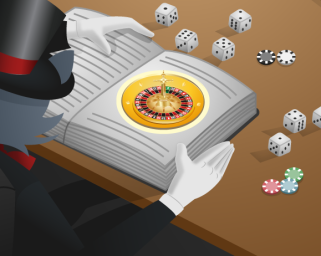Gilbert Bates carries the Stars and Stripes 1800 miles

Gilbert Bates was a sergeant in the 1st Wisconsin Heavy Artillery Regiment during the Civil War, and after the war ended he returned to his farm in Wisconsin. In November 1867, during the period known as Reconstruction, Bates had a conversation with his neighbor, who said that “the Southerners are rebels yet. They are worse now than they were during the war. They hate the Union flag. No man dare show that anywhere in the South except in the presence of our soldiers.”
Bates begged to differ. He told his neighbor that not only was he wrong, he said he could “carry that flag myself from the Mississippi all over the rebel States, alone and unarmed too.”
So began Bates’s three-month march across Mississippi, Alabama, Georgia, South Carolina, North Carolina, and Virginia, which ended in Washington DC. He walked a total of 1400 miles and recorded his journey, which was published in a pamphlet in June 1868. He received hospitality everywhere he went, and was even allowed to fly the flag over a number of official buildings in the South. Ironically, he wasn’t given permission to fly it over the Capitol building in Washington.
Seeing the success Bates experienced in this march, a wealthy friend decided to challenge him to another, $1000 to $100 – this time, Bates would march across the entirety of England, decked out in his full military uniform and carrying the same Stars and Stripes. Bates accepted.
On November 5, 1872, Bates began his 400-mile march from the England-Scotland border to London. Bates’s friend believed that he wouldn’t accomplish the same thing that he had in the American South since most of the English had supported the Confederacy due to cotton exports. He couldn’t have been more wrong. Bates experienced an astonishing amount of kindness; hotel managers refused to charge Bates to stay with them, and people actually fought to feed and house him. When he arrived in London at the end of the month, the crowds were so thick that he had to ride in a carriage to the Guildhall, where he hung the American flag next to the Union Jack.
So, Bates won his bet again. But instead of taking the $1000 like planned, he sent a telegram to his friend from London that said, “Cancel wager. I regard this mission as something finer than a matter of money.” Way to rub it in, Bates. At the very least, take the $100 you would’ve paid if you had lost and use it at the poker table or something.
Earl Fitzwilliam wins a bet with a pyramid

Around 1746, Earl Fitzwilliam was getting drunk with his friends when he accepted a pretty ridiculous bet: that he couldn’t drive a carriage and horses through the eye of a needle. When Fitzwilliam sobered up the next morning, he realized just how difficult this wager would be. Instead of conceding that it was impossible like any sane (A.K.A. not rich) person would, he decided to make it happen with a very expensive solution.
Shortly after, construction of a slender pyramid began. It was around 45 feet tall and featured an arch through the center and a lovely urn on the top. The arch was just big enough for a horse-drawn carriage to fit through. And you might’ve guessed by now, but in case you haven’t – Fitzwilliam named the structure “The Needle’s Eye.”
It isn’t known for sure if the legend is true, but if it is, we can assume that Earl Fitzwilliam won his wager on a technicality by driving a carriage through the structure. The Needle’s Eye is still standing, and there’s evidence that it may have been used as a location for execution by firing squad or target practice, since one side of the pyramid is littered with musket-ball marks.
While the structure is pretty cool looking and the story is interesting, we can’t help but wonder if the money used to build the pyramid and win the bet would’ve been better spent elsewhere, like the blackjack table.
The legend of The Suitcase Man

On September 24, 1980, a young, mysterious man entered Binion’s Horseshoe Casino in Las Vegas carrying two suitcases. One contained $777,000 in cash; the other was empty. The young man had heard about Benny Binion’s unique policy: the maximum bet was set by the player’s first bet amount. So, he placed a bet – the full $777,000 on the Don’t Pass line at the craps table. He won. Binion helped the young man load up his winnings in the empty suitcase, and then he left. He never gave his name.
Often referred to as The Suitcase Man or the Phantom Gambler, William Lee Bergstrom became a legend for placing one of the biggest single bets in history before promptly disappearing. Just under four years later in March 1984, Bergstrom entered the Horseshoe again to place a $538,000 bet again on a single roll of the dice. He picked the Don’t Pass line and won again. He took his mother to a Willie Nelson show, then returned to win another $117,000 on three additional craps bets. Then he walked out again.
However, Bergstrom’s luck was not to last. He came back to the Horseshoe in November of the same year and placed his largest bet, placing $1 million on the Don’t Pass line yet again – equivalent to $2.31 million today. The shooter laid him low with a winning seven on the come out roll, and Bergstrom left the Horseshoe for the first and last time with an empty suitcase.
Unfortunately, Bergstrom committed suicide shortly after in February 1985. The true reason for his suicide remains unknown, though the epic loss might have contributed. Friends and family believed that he still had almost $650,000 to his name at the time of his death, and his suicide note suggested that a breakup with a man 10 years younger may have triggered him to take his own life.
While Bergstrom’s story ended in tragedy, the legend of The Suitcase Man is one that lives on in Las Vegas lore. His $1 million bet is still one of the biggest in the history of Sin City – though we still recommend betting an amount at the craps table that you can afford to lose.
Ashley Revell bets everything on TV

While The Suitcase Man was famous for placing one of the largest bets in Las Vegas history, it wasn’t as risky as Ashley Revell’s wager. Revell didn’t bet anything bigger – a measly $135,000 compared to $1 million – but William Lee Bergstrom still had more than a good chunk of money in the bank when he placed his bet. Revell didn’t. In fact, that amount was literally everything Revell possessed. And he wagered it all on one spin of Roulette wheel.
Revell, an Englishman from Kent, sold every single one of his possessions to raise the $135,000, including his clothing. He even changed his name to Ashley “Blue Square” Revell after the UK online bookmaker donated to his gambling bankroll. He then traveled to Las Vegas, Nevada and entered the Plaza Hotel & Casino, determined to risk the entirety of his net worth on a single bet. If that isn’t nerve-wracking enough, the entire thing was being recorded for a Sky One reality TV mini-series titled Double or Nothing. So, whether Revell won or lost, the event would be recorded forever and used as entertainment for millions of people. No pressure.
Relying purely on luck, Revell first chose the black before experiencing a change of heart and switching his bet to red. Lucky he did – the ball landed on the red 7 and Revell suddenly found his net worth doubled to $270,000. He then set up an online poker company named Poker UTD, which ironically later went out of business. Now Revell owns iGaming Recruitment, a service that pairs online gambling companies with potential job applicants.
While Revell’s story went on to become an entertaining reality television mini-series, we don’t recommend betting your entire net worth at the roulette wheel. Instead, try betting something you can afford, like next month’s rent or your car payment. (Kidding, of course.)
John Heidegger’s ugly bet

John James Heidegger, a native from Zurich, Switzerland, moved to England in the early 1700’s and went on to become influential in opera management. He was known for throwing fantastic masquerade balls at the Haymarket Theatre, but more than that, he was infamous for being incredibly hideous. A woman named Mrs. Delany described him as “the most ugly man that ever was formed,” and Heidegger was apparently proud enough of this fact to challenge anyone to find someone more repulsive.
Enter Lord Chesterfield. He bet Heidegger that he could find someone in London who was uglier, and Heidegger readily accepted, so confident was he in his superior repulsiveness. Chesterfield then came forward with a woman from the London slums who looked certain to be more aesthetically nauseating than the King of Ugly himself. Chesterfield arranged a face-to-face meeting between the two revolting specimens, and was self-assured in his victory upon seeing the two together.
However, before the final judgment was laid down, Heidegger plucked the slummy woman’s hat off her head and placed it on his own. It’s said that the sight of Heidegger’s ugly mug in the woman’s hat was so grotesque that she immediately fainted. The competition was decided – Heidegger was then officially crowned the ugliest man in London, and possibly all of Britain.
Think you’re ready to make a bet or two? Head over to CoolCat Casino and test your luck today!
Good, Bad, and Ugly Bets – Part 1
Good, Bad, and Ugly Bets to Make – Part 2
Good, Bad, and Ugly Bet Ideas – Part 3



















